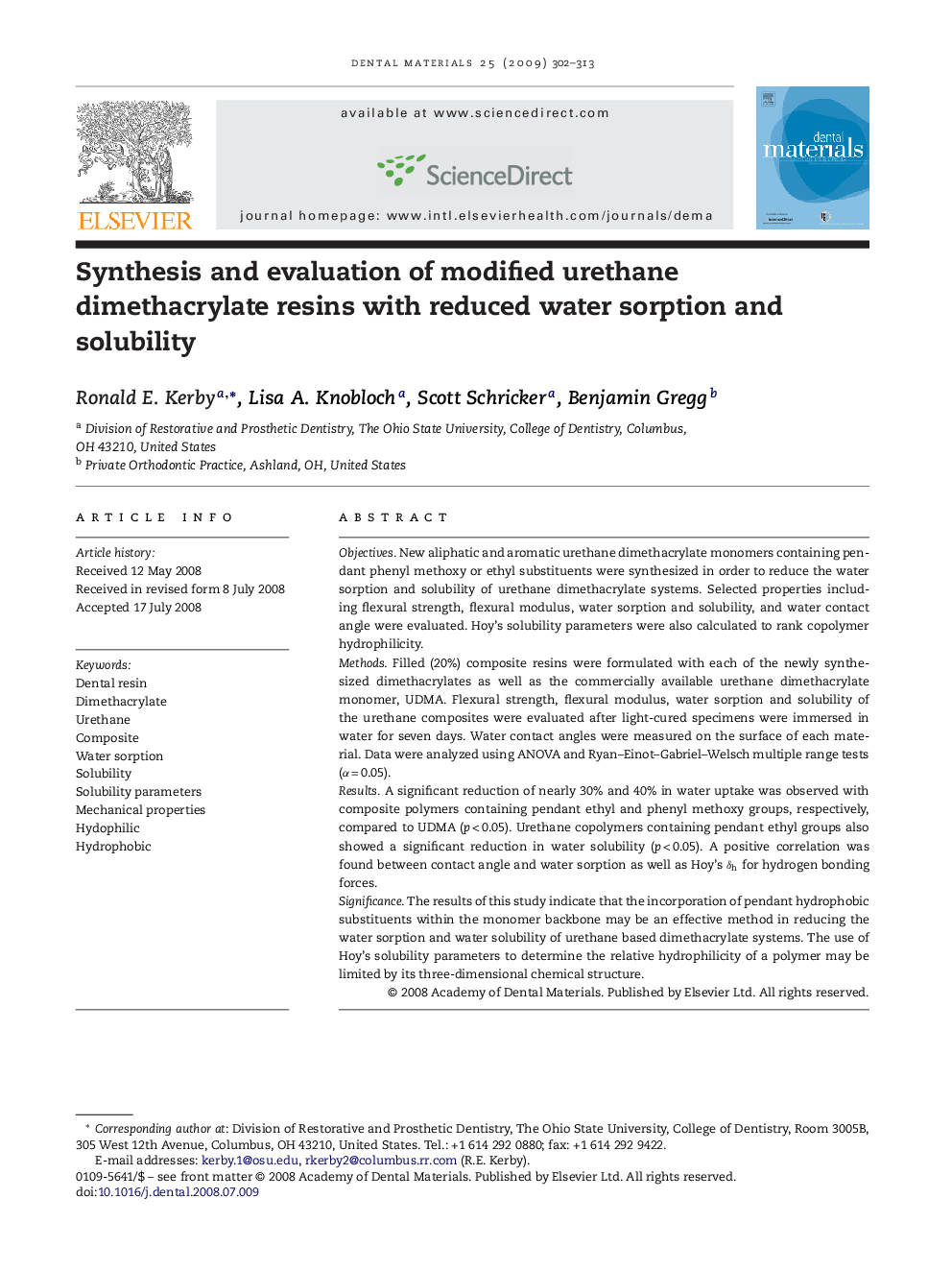| Article ID | Journal | Published Year | Pages | File Type |
|---|---|---|---|---|
| 1422416 | Dental Materials | 2009 | 12 Pages |
ObjectivesNew aliphatic and aromatic urethane dimethacrylate monomers containing pendant phenyl methoxy or ethyl substituents were synthesized in order to reduce the water sorption and solubility of urethane dimethacrylate systems. Selected properties including flexural strength, flexural modulus, water sorption and solubility, and water contact angle were evaluated. Hoy's solubility parameters were also calculated to rank copolymer hydrophilicity.MethodsFilled (20%) composite resins were formulated with each of the newly synthesized dimethacrylates as well as the commercially available urethane dimethacrylate monomer, UDMA. Flexural strength, flexural modulus, water sorption and solubility of the urethane composites were evaluated after light-cured specimens were immersed in water for seven days. Water contact angles were measured on the surface of each material. Data were analyzed using ANOVA and Ryan–Einot–Gabriel–Welsch multiple range tests (α = 0.05).ResultsA significant reduction of nearly 30% and 40% in water uptake was observed with composite polymers containing pendant ethyl and phenyl methoxy groups, respectively, compared to UDMA (p < 0.05). Urethane copolymers containing pendant ethyl groups also showed a significant reduction in water solubility (p < 0.05). A positive correlation was found between contact angle and water sorption as well as Hoy's δh for hydrogen bonding forces.SignificanceThe results of this study indicate that the incorporation of pendant hydrophobic substituents within the monomer backbone may be an effective method in reducing the water sorption and water solubility of urethane based dimethacrylate systems. The use of Hoy's solubility parameters to determine the relative hydrophilicity of a polymer may be limited by its three-dimensional chemical structure.
